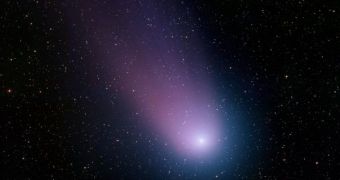Many geologists and biologists believe that a huge comet impact devastated North America some 13,000 years ago, killing off many species of land animals, and completely destroying the Clovis culture. While this idea has been debated in the scientific community for a very long time, it would appear that its critics were correct. A new study has determined that there are little to no pieces of evidence to prove that an impact did occur, and that explanations for the sudden, “little extinction” need to be sought for elsewhere, Nature News reports.
In the latest issue of the respected journal Proceedings of the National Academy of Sciences (PNAS), experts report on the soil samples they collected from seven sites across the United States, all determined to be from the Clovis age. The investigations revealed little to no traces of magnetic cosmic debris, which was to be expected if North America was, indeed, hit by a comet. This is not the first paper to cast doubt on the impact hypothesis. Other researches were also unable to establish a direct correlation between the geological record and the theory itself.
The idea appeared back in 2007, in a study conducted by Californian researchers. They analyzed evidence and soil samples from 25 locations, and determined that they contained magnetic microspherules, which were conclusive for the comet-impact theory. Their finds were further supported by Lawrence Berkeley National Laboratory (Berkeley Lab) expert Richard Firestone, who further discovered signs of the microspherules at these locations, including eight Clovis-era sites. Two of these sites were also included in the new investigation, which revealed no signs of the formations.
“I spent hundreds of hours at the microscope examining sediment samples, and I didn't find any physical evidence to support their theory,” University of Wyoming archaeologist Todd Surovell, who has spent the past 18 months looking at rock samples and searching for the microspherules, says. University of California at Santa Barbara palaeoceanographer James Kennett, a co-author of the 2007 study, adds that the new investigation did not use the proper techniques to identify the structures. “Their study doesn't negate our hypothesis,” he shares.

 14 DAY TRIAL //
14 DAY TRIAL //